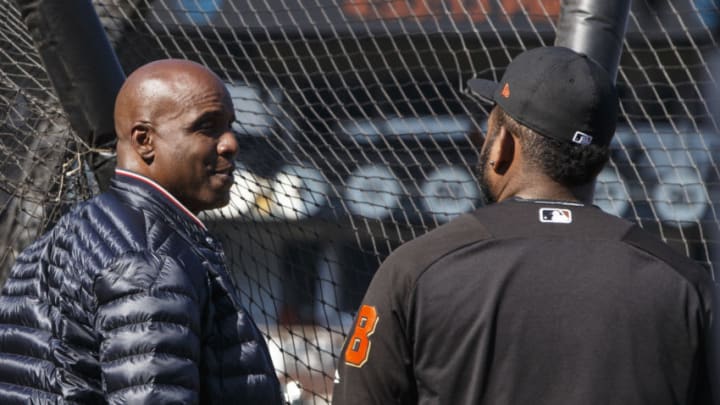There were quite a few seasons that were forgettable for the San Francisco Giants, and 1996 season was definitely one of those.
Following the heartbreak of the epic pennant race in 1993, the Giants hopes to come back in 1994 were dashed by the strike, and they didn’t fare much better in 1995. Coming into 1996, the team traded Royce Clayton to the Cardinals and signed utility man Shawon Dunston in free agency.
Barry Bonds, Matt Williams, Robby Thompson and Kirt Manwaring were still still in the lineup, and Rod Beck was still in the bullpen. Mark Leiter, who was the co-winner of the Willie Mac Award along with Mark Carreon in 1995, was the opening day starter. William VanLandingham, Allen Watson, Osvaldo Fernandez and the newly-signed Mark Gardner made up the rest of the rotation.
The 1996 season got off to a decent start on the field, but it got off to a great start off the field. In March, the voters of San Francisco approved Proposition B, which allowed the Giants to privately finance and build a new ballpark at the corner of 3rd and King Streets in China Basin. It was the final victory for a new ownership that had just saved the team from moving to St. Petersburg just almost three and a half years prior. The Giants were finally going to be able to move out of Candlestick Park, and it was official that the team was going to stay in San Francisco for a very long time.
On the field, the Giants lost their first two games of the season in Atlanta, and the team was a .500 team throughout most of the first half. After the Giants won a 15-inning marathon against the Florida Marlins at The Stick on June 19, they were 36-33. They had never been anymore than four games over .500, and they had never been anymore than two games under .500.
More from Around the Foghorn
- SF Giants: Reliever Reyes Moronta clears outright waivers
- SF Giants sign veteran 1B John Nogowski to minor league deal
- SF Giants call on veteran LHP Scott Kazmir for big start against Padres
- SF Giants: Update on Alex Dickerson’s rehab assignment
- Atlanta claims SF Giants C Chadwick Tromp off waivers
However, the Giants began a 10-game losing streak with a loss in Atlanta that very night on June 20. It wasn’t just the start of a 10-game losing streak; it was the start of a 10-32 stretch that knocked the team right out of contention. At the end of July, they traded longtime catcher Kirt Manwaring to the Houston Astros, and they traded their opening day starter Mark Leiter to the Montreal Expos.
The Summer of 1996 was a long one at The Stick. The hype of 1993, in which the Giants set a franchise record of 2,606,354 fans, was gone, and it was replaced by anger and frustration over the team’s horrible performance on the field. The attendance was almost cut in half to 1,413,932 in 1996.
If you want to know more about that anger, just listen to some of the stories about what happened whenever Braves fans visited The Stick — it wasn’t pretty.
Matt Williams missed some time with injuries, and no one in the rotation had an ERA lower than 4.42. However, not all was lost on the field. Barry Bonds hit his 300th-career home run on April 27 against the Marlins. Though, oddly enough, he was ejected by Mark Hirschbeck later in that game.
On Sept. 27, Bonds became the second player ever to hit 40 home runs and steal 40 bases in the same season when he stole second base at Coors Field. In a season marred by injuries and poor performances, Bonds played in 158 games, and he hit .308 with 42 home runs and 129 RBI.
Next: Podcast: Q&A With San Francisco Giants Prospect, Jalen Miller
The Giants went 68-94, but with the deal for the new ballpark to open in 2000, the future was incredibly bright, and fans had no idea about the incredible run of success that the team was going to have starting the following season.
